- News
- Reviews
- Bikes
- Components
- Bar tape & grips
- Bottom brackets
- Brake & gear cables
- Brake & STI levers
- Brake pads & spares
- Brakes
- Cassettes & freewheels
- Chains
- Chainsets & chainrings
- Derailleurs - front
- Derailleurs - rear
- Forks
- Gear levers & shifters
- Groupsets
- Handlebars & extensions
- Headsets
- Hubs
- Inner tubes
- Pedals
- Quick releases & skewers
- Saddles
- Seatposts
- Stems
- Wheels
- Tyres
- Tubeless valves
- Accessories
- Accessories - misc
- Computer mounts
- Bags
- Bar ends
- Bike bags & cases
- Bottle cages
- Bottles
- Cameras
- Car racks
- Child seats
- Computers
- Glasses
- GPS units
- Helmets
- Lights - front
- Lights - rear
- Lights - sets
- Locks
- Mirrors
- Mudguards
- Racks
- Pumps & CO2 inflators
- Puncture kits
- Reflectives
- Smart watches
- Stands and racks
- Trailers
- Clothing
- Health, fitness and nutrition
- Tools and workshop
- Miscellaneous
- Buyers Guides
- Features
- Forum
- Recommends
- Podcast
review
 2023 Colnago V4Rs - riding 1.jpg
2023 Colnago V4Rs - riding 1.jpg£12,999.00
VERDICT:
Stunning performance and handling, though you're paying a premium for the Colnago badge
Geometry makes it a dream to ride fast
Impressively responsive
Surprisingly comfortable
Good tyre clearance
Reassuringly expensive
Weight:
7,240g
Contact:

This product has been selected to feature in road.cc recommends. That means it's not just scored well, but we think it stands out as special. Go to road.cc recommends
At road.cc every product is thoroughly tested for as long as it takes to get a proper insight into how well it works. Our reviewers are experienced cyclists that we trust to be objective. While we strive to ensure that opinions expressed are backed up by facts, reviews are by their nature an informed opinion, not a definitive verdict. We don't intentionally try to break anything (except locks) but we do try to look for weak points in any design. The overall score is not just an average of the other scores: it reflects both a product's function and value – with value determined by how a product compares with items of similar spec, quality, and price.
What the road.cc scores meanGood scores are more common than bad, because fortunately good products are more common than bad.
- Exceptional
- Excellent
- Very Good
- Good
- Quite good
- Average
- Not so good
- Poor
- Bad
- Appalling
Colnago's V4Rs is a peloton-ready road race machine focusing on stiffness, lightness and comfort, with a smidgeon of aerodynamic tweaks thrown in for good measure. The highlight of the ride is that it isn't a handful to live with in the steering department, meaning that us mere mortals can push this bike hard through the bends and come out the other side with a grin on our faces.
Looking for marginal gains? Check out our guide to the best aero road bikes.
Ride
Search 'V4Rs' and you'll see that it's ridden by UAE Team Emirates and has carried a certain Tadej Pogacar to many victories so far this year, so it certainly has some pedigree. But pro-level bikes don't necessarily translate to those who don't race or those who don't at least ride very fast, especially on the descents. The handling is often very quick, bordering on twitchy, designed for being chucked down a mountain pass at ridiculously high speeds.
The V4Rs is capable of that – very capable indeed. It's one of the most surefooted bikes I've put down the technical descent that I use for testing the handling on every road bike coming in for review. The geometry (I'll go into the full figures later on) is low slung, and definitely performance orientated, but the front end isn't overly steep, which brings a touch of neutrality to the handling.
When pushing hard through off-camber sections or clipping the apex through chicanes at speed, the Colnago feels very tight, very precise and very direct. With a light grasp of the bar and with a bit of flex in your elbows and knees you can just let the V4Rs go, and it feels planted.
It responds well to hard braking, too, when slowing before you head into a bend, and even if you have to scrub off a bit more speed mid-bend or change your line, the Colnago never feels flustered.
Elsewhere things are just as impressive. The feeling of stiffness throughout the whole frame and fork is immense, which is no surprise as it's designed to cope with many more watts than my legs can deliver.
It's just a bike that wants to get on and go. At 7.25kg on our scales this build isn't troubling the UCI's weight limit, but it still feels nimble and massively responsive.
Stiffness often comes at the cost of comfort and that's true to a degree here. On the rough textures of the British road network there is more buzz coming through than you would find from an amateur-level endurance bike, for instance. It's not uncomfortable though. I didn't get back from long rides feeling battered or in pain. It's a tool for a specific job, and it does that job without beating you up.
Frame and fork
The V4Rs's carbon fibre monocoque frame has a claimed weight of 798g for this size 51, while the full carbon fibre fork is around 375g. It's actually a bit lighter than its predecessor, the V3Rs, but Colnago says that the main changes are that the carbon structure is now more resilient to impacts in vulnerable areas like the seatstays, which should see it fare better in a crash.
Tyre clearance is impressive at 32mm – wide for a high-performance bike of this ilk but on a par with many others. This means comfort can be boosted for those longer rides by using some larger rubber at lower pressures.
I like the fact while the frame and fork can take tyres of this size, nothing looks gappy when running narrower tyres which, let's be honest, you are more likely to be using. This bike runs sweetly with 25mm tyres and 28s, but it's nice to have the option to go bigger should the need arise.
The frame is designed for wireless electronic groupsets only, with no entry points for cables or wires. In fact, you won't see anything for brake hoses either as everything is fed internally down through the head tube and headset to give a very smooth and clean look.
The seatpost clamp is also integrated, keeping those smooth lines flowing, and you won't find any mounting points for anything other than a couple of bottle cages.
You do get a mini multi-tool hidden away in the steerer tube, though – a cool touch.
For the bottom bracket Colnago has gone down the T47 route; this, if you're not familiar with it, is a larger version of a standard threaded BSA bottom bracket with the dimensions of a press-fit option.
Basically, by threading the bearing cups into the frame you are removing the issues that haunted some press-fit setups where the tolerances between frame and cups weren't tight enough to stop creaking from ingress of dust, water and so on.
Geometry
The V4Rs is offered in seven sizes, which is a good spread – many brands only offer five.
The sizing is in relation to the seat tube length, so this 51 has a 510mm seat tube. It has an effective top tube length of 550mm, with the smallest bike getting 504mm, and the largest measuring 599mm.
For this size, the rest of the measurements are a 148mm head tube length and chainstays of 408mm, while the stack and reach figures are 557mm and 388mm respectively. Absolutely nothing out of the order there.
As I mentioned earlier, one thing I was surprised about when I saw the geometry table was how relaxed the front end is. For this kind of bike, I was expecting a much steeper head angle than the 71.8 degrees listed, but then this is what makes the V4Rs so easy to ride at speed, so it definitely works.
The seat angle sits at 74 degrees, which is definitely what I was expecting, putting you in a forward, aggressive position for getting the power down.
Finishing kit
For those of you who think a Colnago should come with an Italian Campagnolo groupset then you won't be a fan of seeing this model draped in components from Shimano's Dura-Ace lineup.
Personally, I think this Di2 offering looks awesome with its black finish, and the performance from both the gearing and the brakes is phenomenal. Check out our review of the R9200 groupset if you want more detail.
As you would expect on a bike of this price, the finishing kit has not been scrimped on. There are no unbranded parts or places where compromises have been made.
The stem is from Deda, its Superbox, which is a part that we are seeing on quite a lot of builds lately as it is designed to accept any cables and hoses from the handlebar and funnel them down through the headset and head tube.
For the handlebar you get a Colnago HB R41, a carbon fibre design with internal hose/cable routing and a smooth wing top section giving plenty of comfortable hand positions. The shallow drop means that in a racing position it isn't too low for someone like me with a far from flexible, crash-damaged back, and it gives you good access to the shifter levers and brakes.
The only downside to the bar is that the central round section is only wide enough for the stem clamp. You won't be able to fit an out-front mount that clamps to the bar, or run lights with standard mounts.
The Colnago carbon fibre seatpost is colour coded to match the frame, and sitting on top is a Prologo Scratch M5 CPC, a saddle that I like very much; the small CPC 'suction cups' give an extra bit of grip and comfort.
Wheels and tyres
To match the groupset Colnago has specced Dura-Ace wheels, C50s, which, as you've probably worked out, have a rim depth of 50mm.
I found them a lovely set of wheels, being stiff for hard, out-of-the-saddle efforts, and they feel quick under acceleration from a standing start. They also have that lovely floating feeling above 20mph where the aerodynamics of the deep-section rims comes into play.
Fitted to the wheels are a set of Pirelli's P Zero Race in a 28mm width. A grippy set of tyres that roll very well indeed, and don't do too badly on the durability front for such a performance-focused tyre. They'll need to be run with inner tubes – not a problem from my point of view as I rarely use tubeless on the road, but if you do, you'll need to upgrade the tyres and valves. (Pirelli makes a tubeless version of the P Zero, the Race TLR.)
Value
This build will cost you £12,599, so is very much in that 'you can buy a car for that!' response zone from your non-cycling buddies, after a sharp intake of breath.
It's not on its own at that price point, though, with the Pinarello Dogma F Super Record recently tested by Aaron coming in at £12,400. It was slightly lighter at 6.9kg.
I reviewed the Specialized S-Works Tarmac SL7 back in 2021 and in terms of performance it's one of the best bikes I've ever ridden. It, too, was supremely light at 6.85kg. With a Dura-Ace Di2 build it was then £10,500, but now sits at £13,000.
The Merida Reacto Team (Liam reviewed the Team-E version) is the bike ridden by Team Bahrain Victorious and it comes with a full Dura-Ace Di2 groupset including power meter (which the V4Rs doesn't), deep-section Vision Metron SL wheels and integrated Vision Metron cockpit. It's a lot of bike for its £8,500 asking price.
Conclusion
The V4Rs is a stunning bike to ride wherever you are taking it. With incredible stiffness, it's a dream for sprinters and those who like to attack the climbs hard, and while the steering is precise and quick, it has handling traits that can be exploited by those of us who've never found ourselves in a pro peloton.
Yes, it has a big-ticket price, but brands like Colnago tend to carry a premium. Whether you agree it should or not, the fact is, it isn't over the top when compared with some of the competitors we've reviewed.
Verdict
Stunning performance and handling, though you're paying a premium for the Colnago badge
road.cc test report
Make and model: Colnago V4Rs
Size tested: 510, 55cm
About the bike
List the components used to build up the bike.
Groupset: Shimano Dura-Ace 9200 Di2
Wheelset: Shimano Dura-Ace C50
Tyres: Pirelli P Zero Race 700x28c
Handlebar: Colnago HB R41
Stem: Deda Superbox
Seatpost: Colnago
Saddle: Prologo Scratch M5 CPC
Tell us what the bike is for and who it's aimed at. What do the manufacturers say about it? How does that compare to your own feelings about the bike?
Colnago simply says:
"Built to do just one thing
V4Rs is built to win"
It is designed as an all-round race bike, and that is definitely how it rides.
Where does this model sit in the range? Tell us briefly about the cheaper options and the more expensive options
The V4Rs is available as a frameset for £4,995.95 which can then be built into various setups using electronic groupsets.
Frame and fork
Overall rating for frame and fork
9/10
Tell us about the build quality and finish of the frame and fork?
The frame and fork are finished to a very standard throughout.
Tell us about the materials used in the frame and fork?
The frame is a carbon fibre monocoque, and the fork is a full carbon fibre structure too.
Tell us about the geometry of the frame and fork?
The geometry is designed with performance in mind, although I wouldn't say the handling that results from it is as aggressive as some of the pro-level bikes I have ridden.
How was the bike in terms of height and reach? How did it compare to other bikes of the same stated size?
The stack and reach figures give a ratio of 1.43 which is very much race orientated.
Riding the bike
Was the bike comfortable to ride? Tell us how you felt about the ride quality.
Considering its stiffness, I'd say the comfort levels are pretty good.
Did the bike feel stiff in the right places? Did any part of the bike feel too stiff or too flexible?
It's very stiff throughout the frame and fork, which means you can ride it as hard as you like.
How did the bike transfer power? Did it feel efficient?
With a good overall weight, and well-specced components the V4Rs always feels efficient.
Was there any toe-clip overlap with the front wheel? If so was it a problem?
No.
How would you describe the steering? Was it lively neutral or unresponsive? On the fun side of neutral.
Tell us some more about the handling. How did the bike feel overall? Did it do particular things well or badly?
The steering is quick and precise without stepping over into twitchiness.
Which components had the most effect (good or bad) on the bike's comfort? would you recommend any changes?
I'm a big fan of the shape of the Prologo saddle, and the handlebar offers plenty of comfortable hand positions.
Which components had the most effect (good or bad) on the bike's stiffness? would you recommend any changes?
I didn't find flex in any of the V4Rs's components. The Shimano Dura-Ace chainset deals with everything you put through it, and the handlebar doesn't flex when you are out of the saddle.
Which components had the most effect (good or bad) on the bike's efficiency? would you recommend any changes?
The C50 wheels bring an aero bonus to the ride, and the sticky Pirelli tyres help you carry that speed through the corners.
Rate the bike for efficiency of power transfer:
9/10
Rate the bike for acceleration:
9/10
Rate the bike for sprinting:
9/10
Rate the bike for high speed stability:
9/10
Rate the bike for cruising speed stability:
9/10
Rate the bike for low speed stability:
8/10
Rate the bike for flat cornering:
8/10
Rate the bike for cornering on descents:
9/10
Rate the bike for climbing:
8/10
The drivetrain
Rate the drivetrain for performance:
9/10
Rate the drivetrain for durability:
8/10
Rate the drivetrain for weight:
8/10
Tell us some more about the drivetrain. Anything you particularly did or didn't like? Any components which didn't work well together?
The Dura-Ace groupset is beautiful to use, both for shifting and braking. I'd say it's near faultless.
Wheels and tyres
Rate the wheels for performance:
8/10
Rate the wheels for durability:
8/10
Rate the wheels for weight:
8/10
Rate the wheels for comfort:
7/10
Tell us some more about the wheels.Did they work well in the conditions you encountered? Would you change the wheels? If so what for?
A very good set of wheels that roll well, give an aero boost when travelling at speed, and have a good weight so don't hamper the bike when on the hills.
Rate the tyres for performance:
9/10
Rate the tyres for durability:
8/10
Rate the tyres for weight:
8/10
Rate the tyres for comfort:
8/10
Tell us some more about the tyres. Did they work well in the conditions you encountered? Would you change the tyres? If so what for?
High-performance tyres that suit the high-performance nature of the V4Rs.
Controls
Rate the controls for performance:
8/10
Rate the controls for durability:
8/10
Rate the controls for weight:
8/10
Rate the controls for comfort:
8/10
Tell us some more about the controls. Any particularly good or bad components? How would the controls work for larger or smaller riders?
Some great components that all do their job well. I wouldn't want to change any of it.
Your summary
Did you enjoy riding the bike? Yes
Would you consider buying the bike? Yes
Would you recommend the bike to a friend? Yes
How does the price compare to that of similar bikes in the market, including ones recently tested on road.cc?
It's a few hundred quid cheaper than a similarly specced Specialized S-Works Tarmac, and around the same sort of money as the Pinarello Dogma we reviewed recently. Similar spec bikes can be had for a lot less, though, like the Merida mentioned in the review.
Rate the bike overall for performance:
9/10
Rate the bike overall for value:
5/10
Use this box to explain your overall score
It's a stunning-to-ride pro-level race bike that flatters your riding regardless of your skill level on the handling front. The price is higher than some similarly specced bikes that may not have the history or brand recognition of Colnago, and some of them can undercut it on weight too, but in terms of performance it's excellent.
About the tester
Age: 44
I usually ride: This month's test bike My best bike is: B'Twin Ultra CF draped in the latest bling test components
I've been riding for: Over 20 years I ride: Every day I would class myself as: Expert
I regularly do the following types of riding: time trialling, commuting, club rides, sportives, fixed/singlespeed,
Since writing his first bike review for road.cc back in early 2009 senior product reviewer Stu has tested more than a thousand pieces of kit, and hundreds of bikes.
With an HND in mechanical engineering and previous roles as a CNC programmer/machinist, draughtsman and development engineer (working in new product design) Stu understands what it takes to bring a product to market. A mix of that knowledge combined with his love of road and gravel cycling puts him in the ideal position to put the latest kit through its paces.
He first made the switch to road cycling in 1999, primarily for fitness, but it didn’t take long for his competitive side to take over which led to around ten years as a time triallist and some pretty decent results. These days though riding is more about escapism, keeping the weight off and just enjoying the fact that he gets to ride the latest technology as part of his day job.
Latest Comments
- Mr Blackbird 42 min 10 sec ago
The problem with using a mobile is the image would be quite small and there would be a delay in recognising a hazard. The camera technology needs...
- mctrials23 45 min 18 sec ago
Amazed she wasn't given a gentler slap on the wrist. Ireland is fantastically poor at taking dangerous driving seriously.
- cmedred 45 min 21 sec ago
"Be Safe in Low Light Conditions?'' Really? Where's the evidence for that? "Be Safer in Low Light Conditions'' might have been better. Hi-Vis,...
- chrisonabike 1 hour 45 min ago
Indeed - but again these are perhaps questions we should keep asking. Even if the immediate answer is "well we are where we are" or "how on earth...
- Surreyrider 2 hours 38 min ago
Specialized aren't that American. Merida owns something like 49%.
- wtjs 3 hours 32 min ago
Then smash bad driving behaviour very hard...
- David9694 8 hours 10 min ago
Calls for Oxfordshire transport chief to resign blocked...
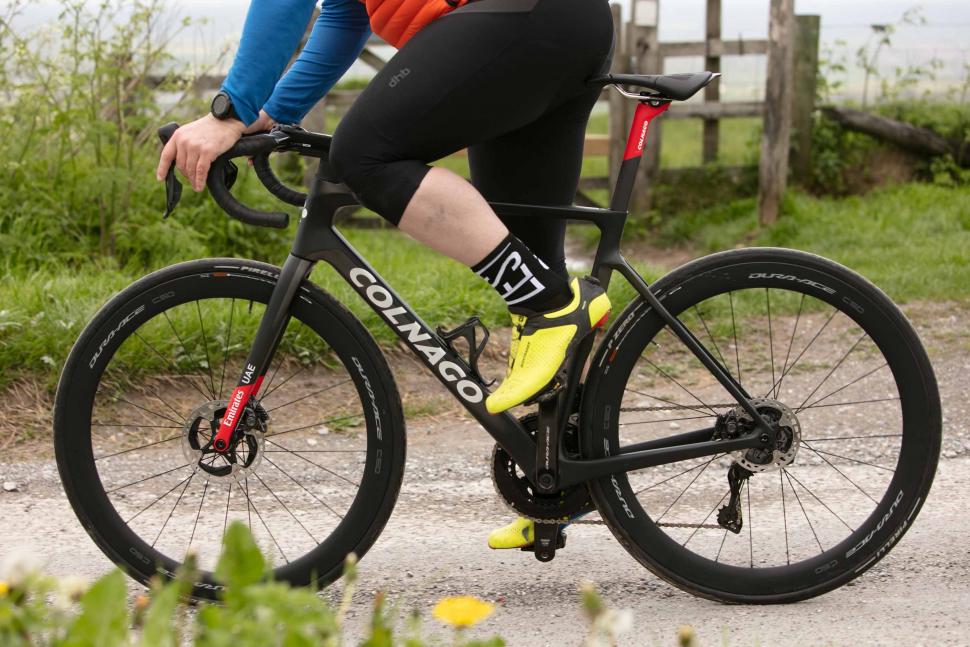



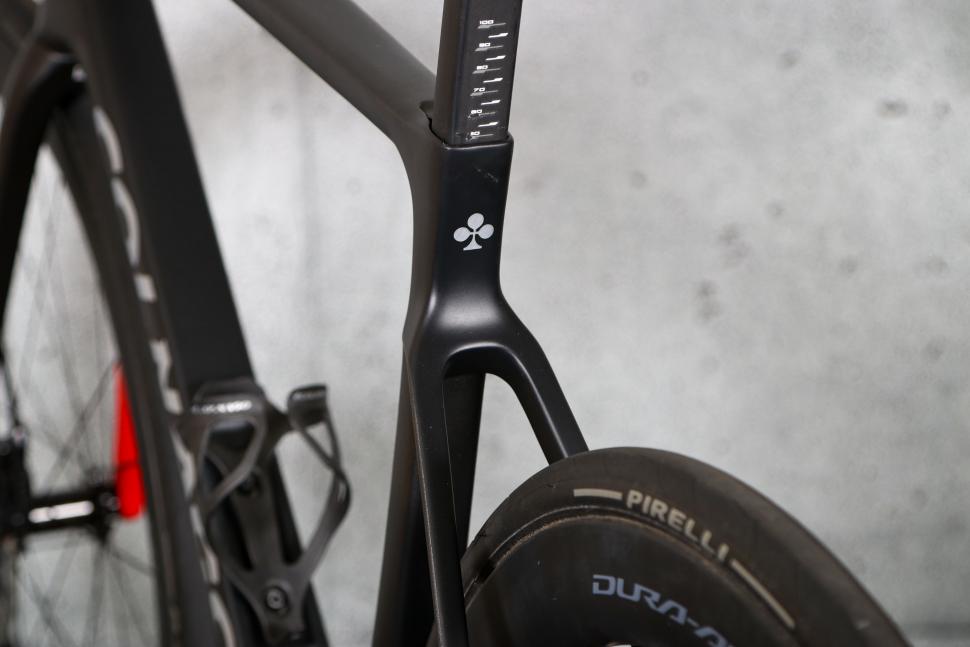
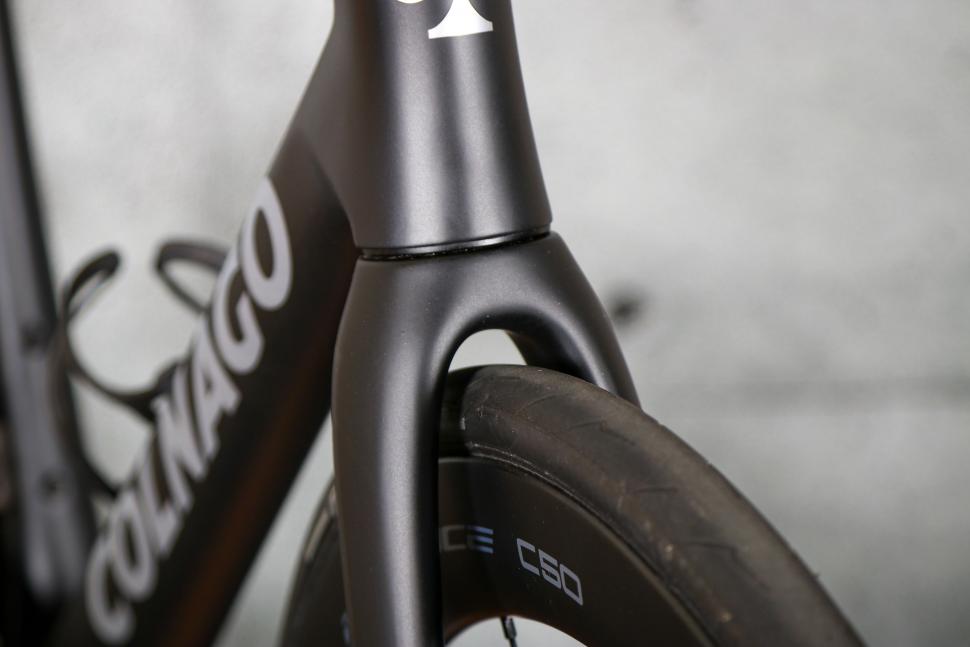


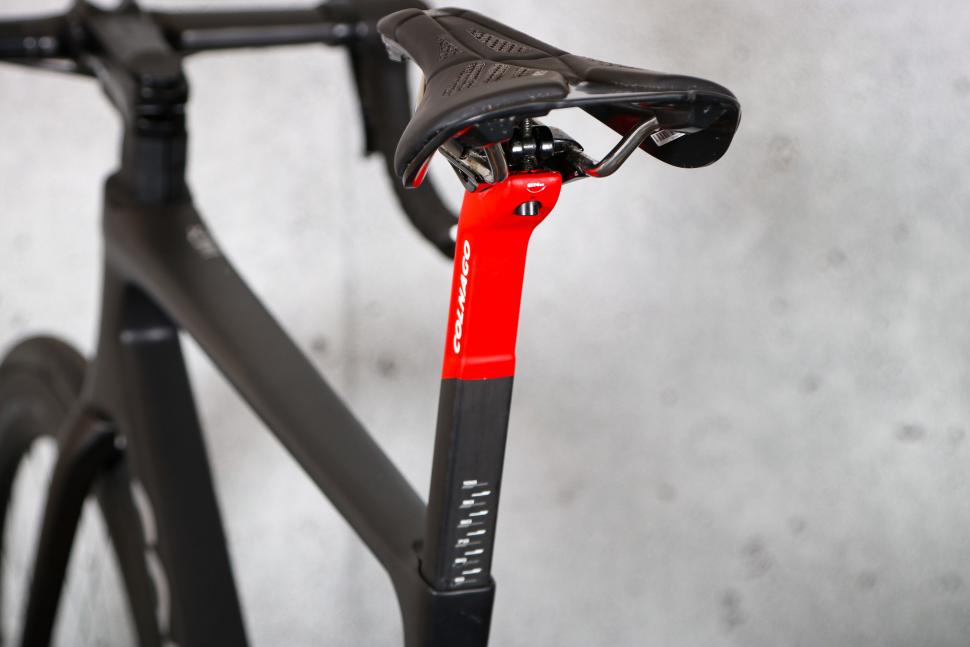

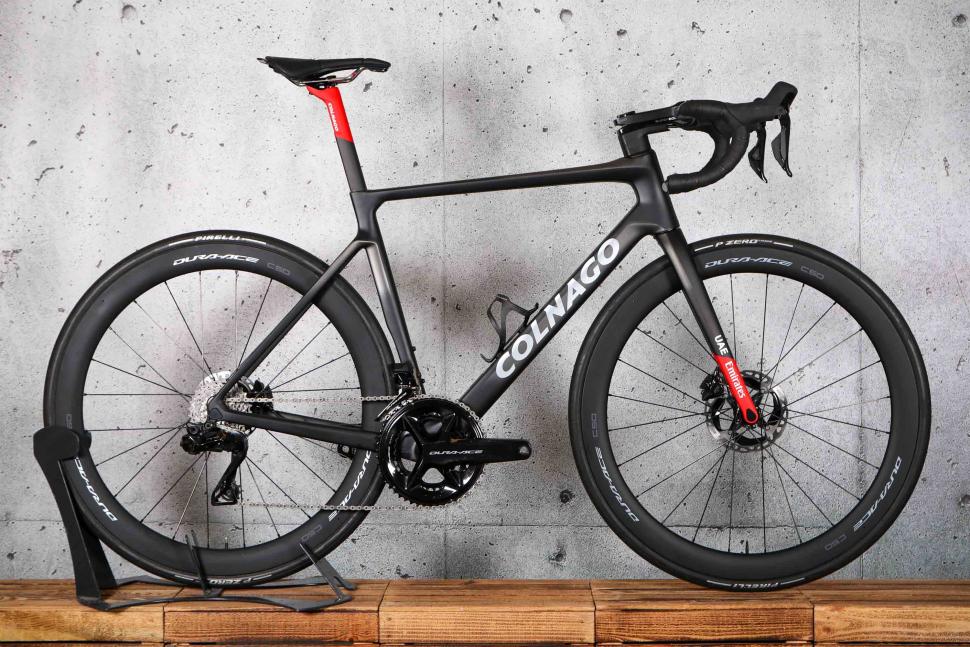














































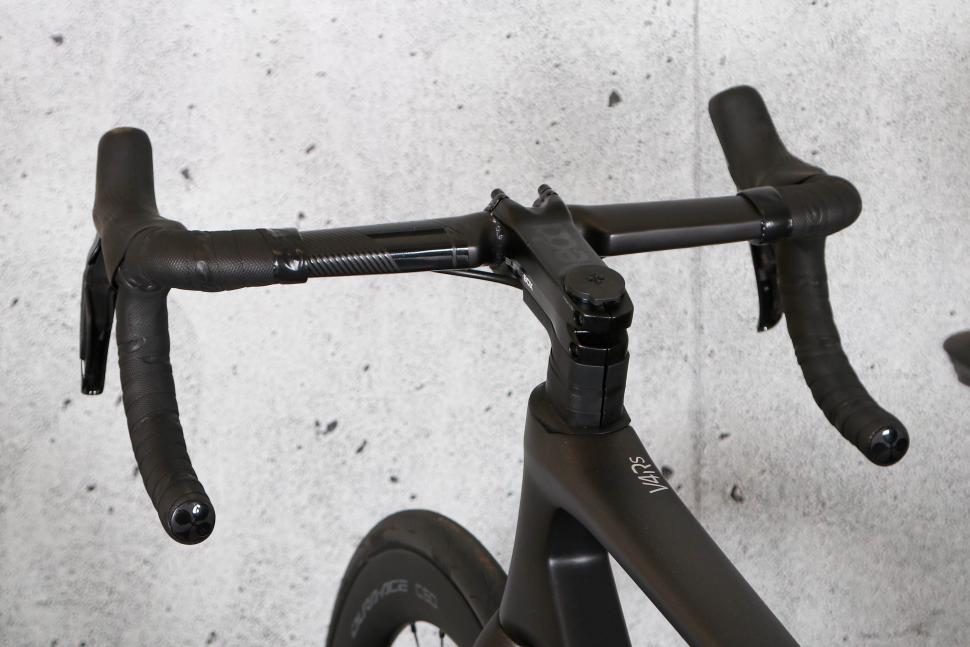
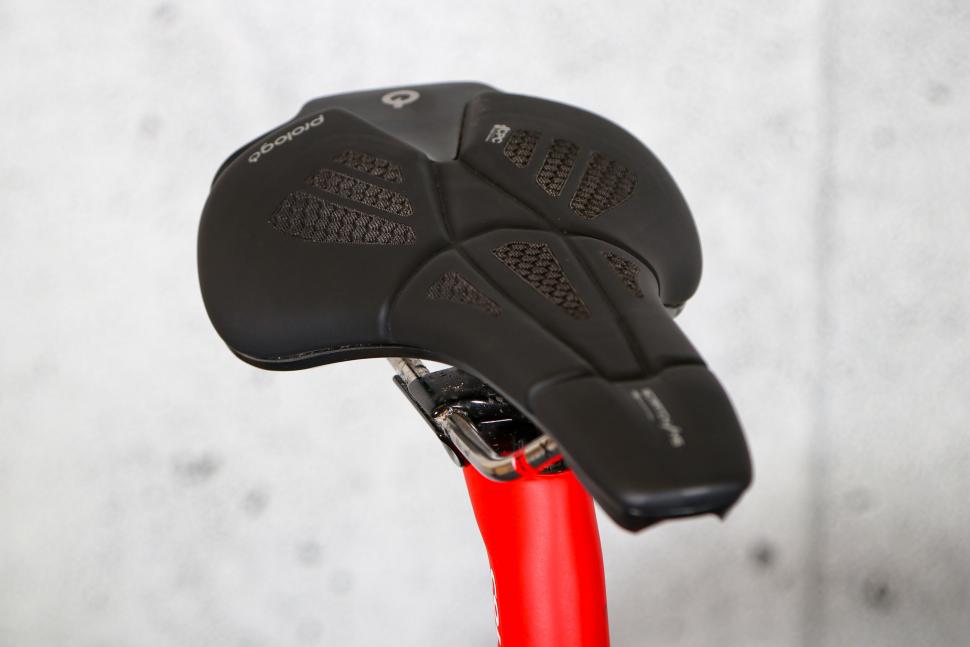

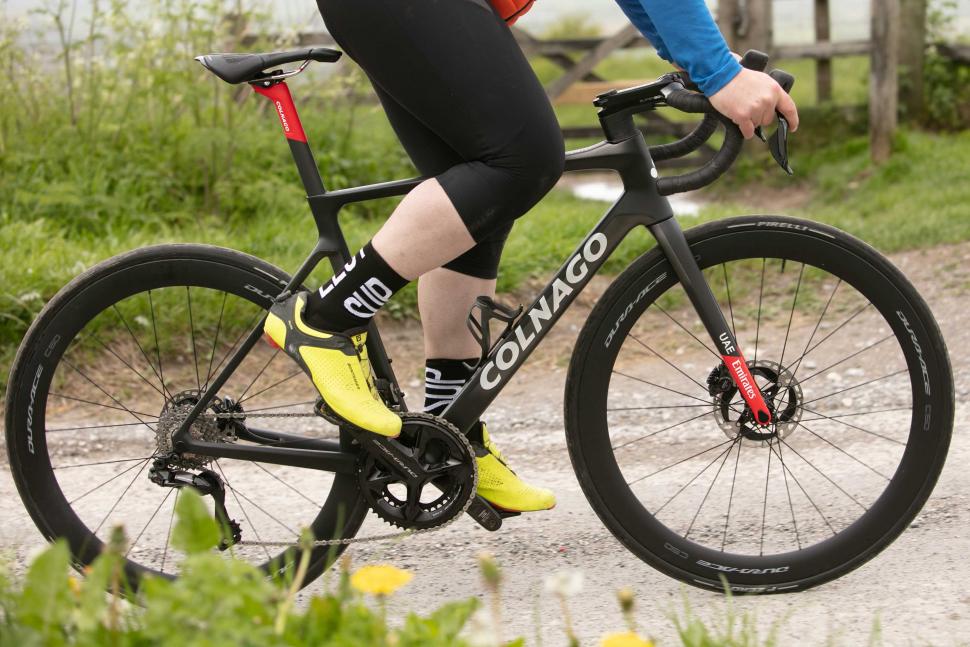





Add new comment
12 comments
I'd seriously open my wallet for this bike, but you lost me at shimano.
Sorry, but a Colnago without Campy is like a ride without sunshine.
Don't let a thing like that stop your wallet opening, it's also available with Campagnolo, you're in luck.
https://www.lordgunbicycles.co.uk/colnago-v4rs-campagnolo-super-record-e...
How times change.
Its not long ago the most controversial thing would of been the presence of Shimano components on a Colnago thoroughbred bike.
This is a bit of a myth. Whilst I would want my Colnago to be Campag, many of the pro successes in the 90's were on on Dura Ace equiped bikes, because Shimano were first with indexing and combine brake/ shifters.
7.24kg is outrageous for a 13 grand bike with an 800g frame
You could always remove the mini multi-tool hidden away in the steerer tube.
Drillium!
Colnagos have never been the lightest bikes, Ernesto has always maintained that rider safety is paramount over a few grams. It's so marginal you'll never notice it. My C60 is sublime, easily the best bike I've ever ridden, even beats my old C40HP. It rides and handles so much better than my old Pinarello.
I "only" have a late 2000's Arte which I restored and it just feels "good" to ride. Most of the components came off my other bike but it immediately felt better. Ernesto also believed in test riding prototypes, not using computer models to say what was "better". Personally if my lottery numbers came up I would buy a C bike rather than one of these and as you say 400g is fairly marginal, and could easily be saved by most amateur riders by eating a little less.
My 7 year old C60 is under 6.8kg with nothing particularly exotic. This V4r is closer in weight to my lugged steel Master
My 14 year old EPS is 6.85kg with nothing particularly exotic. Disc brakes weigh a lot it seems!
I only came here to comment that for £13k they hadn't even provided the carbon railed Prologo M5, which would probably save 100g right away!